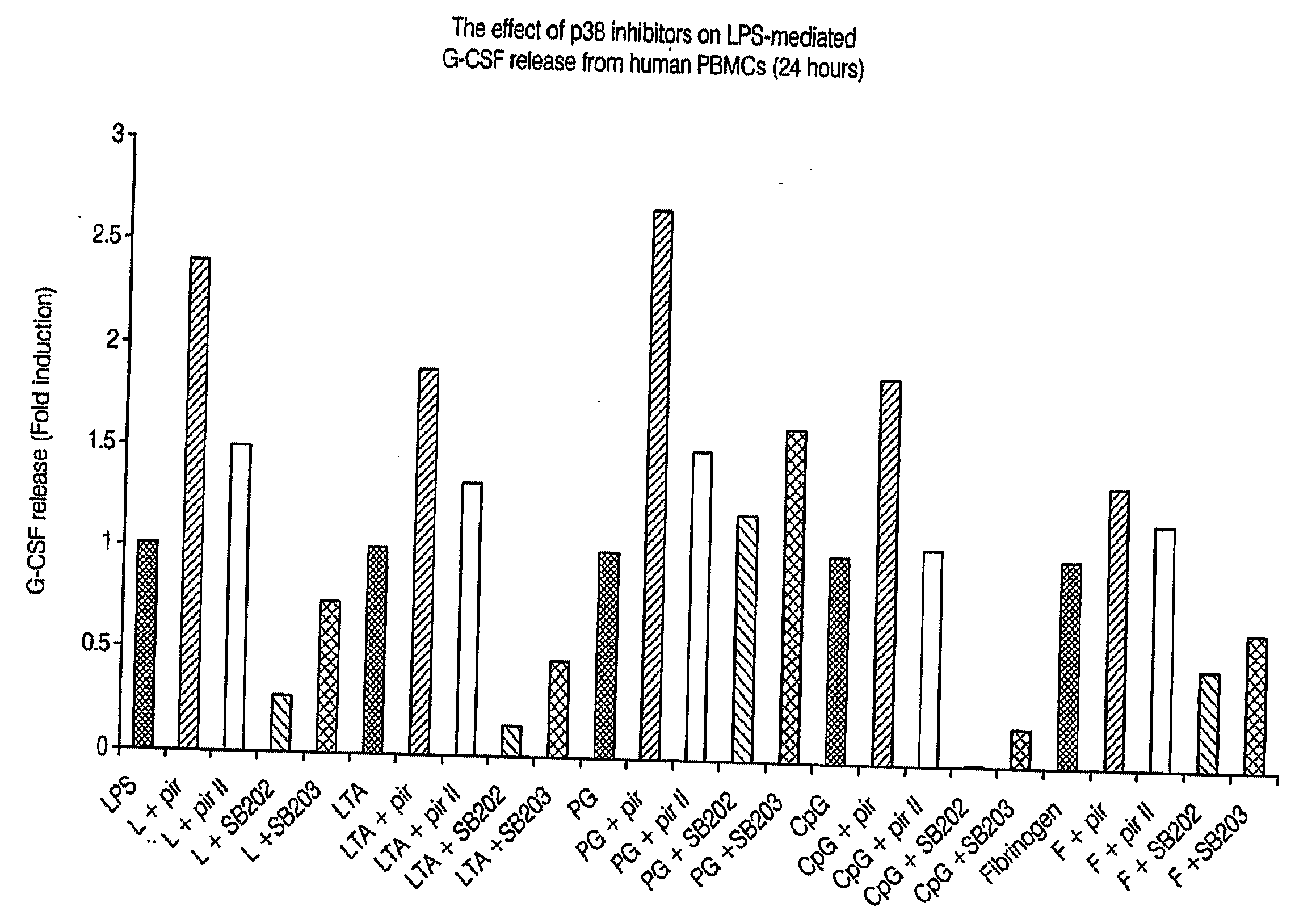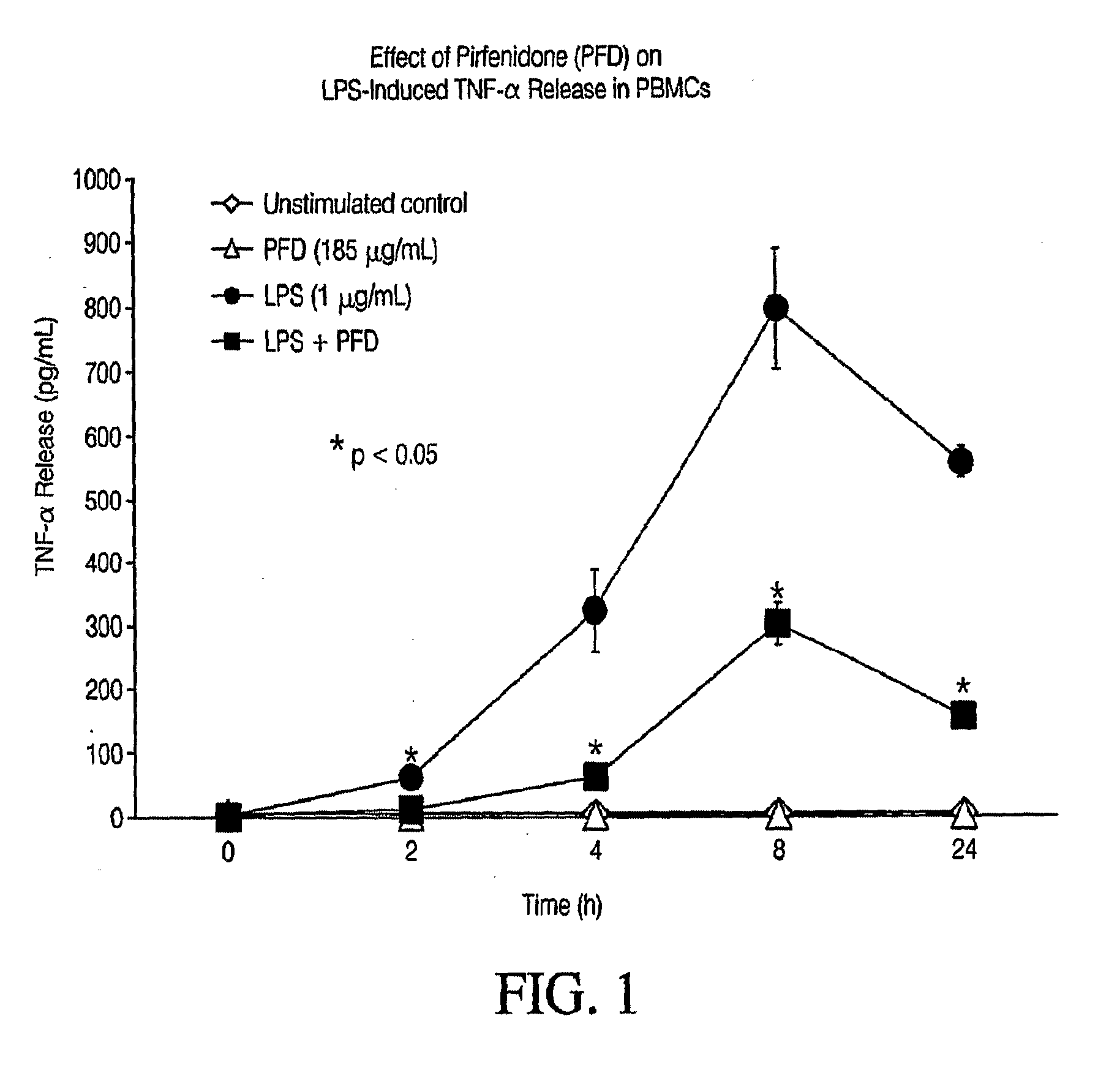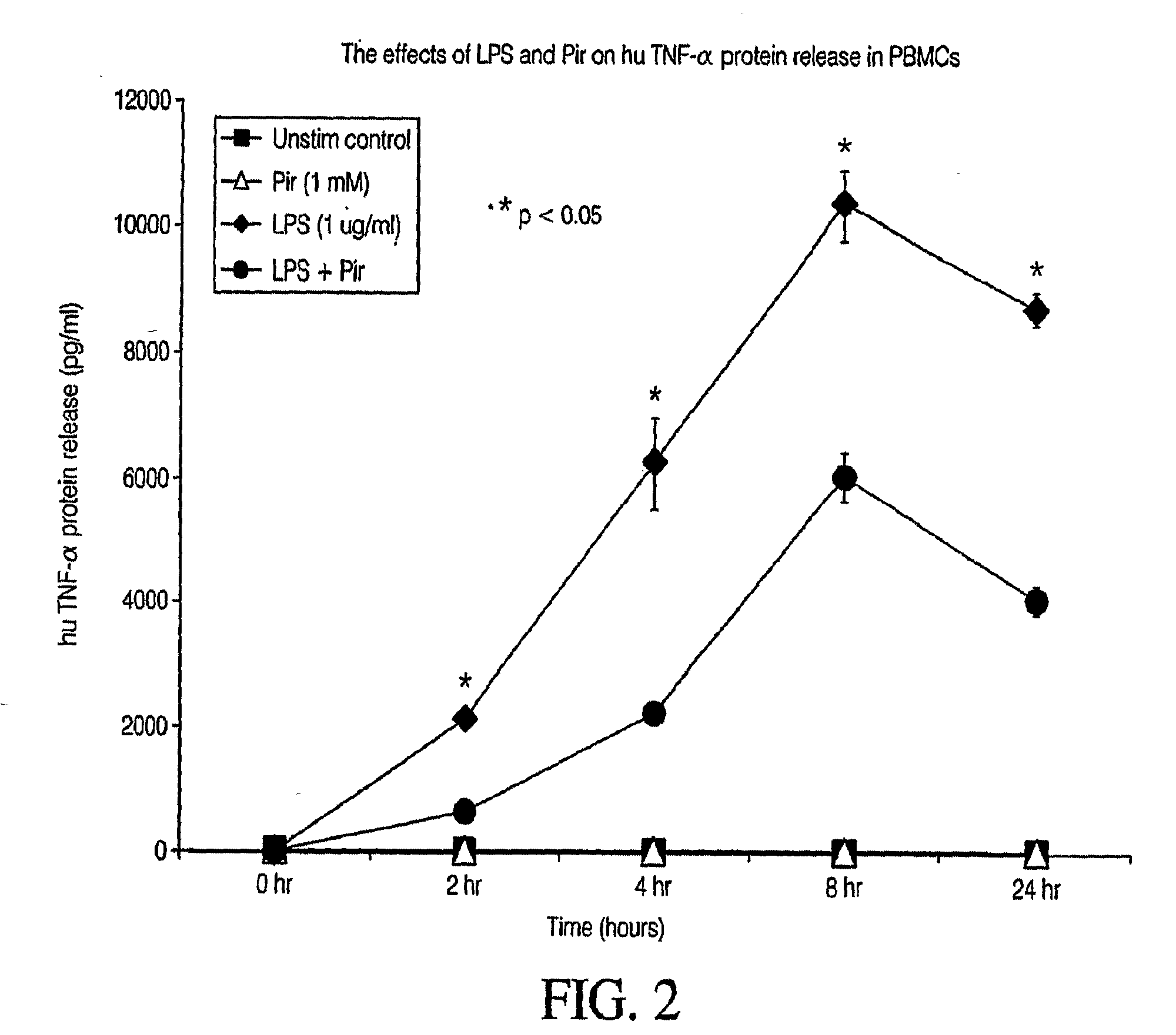Pirfenidone/toll-like receptor (TLR) agonist compositions and methods for using them to stimulate production of granulocyte colonizing stimulating factor (g-csf)
- Summary
- Abstract
- Description
- Claims
- Application Information
AI Technical Summary
Benefits of technology
Problems solved by technology
Method used
Image
Examples
example 1
[0102]Human PBMCs (105 cells per well) were pretreated with pirfenidone (5 mM to 5 μM) for one hour in a 96-well plate and then stimulated with LPS (1 g / ml to 0.01 ng / ml) for 1, 2, 8, or 24 hours at 37° C. Subsequently, cells were spun and supernatants collected and assayed for protein expression using the BioRad Multiplex Cytokine Platform, which enables 17 different cytokines to be analyzed simultaneously: G-CSF, GM-CSF, IFN-γ, IL-1β, IL-2, IL-4, IL-5, IL-6, IL-7, IL-8, IL-10, IL-12 (p70), IL-13, IL-17, MCP-1, MIP-1β, and TNF-α.
[0103]FIG. 1 shows that pirfenidone (185 μg / mL) and LPS (1 μg / mL) reduced TNF-α expression in PBMCs. FIG. 2 shows the effects of pirfenidone (inM) and LPS (1 μg / mL) on TNF-α release in PBMCs. FIG. 3 shows the effects of LPS and pirfenidone at varying concentrations (0-5,000 μM) on TNF-α release at 8 hours in PBMCs. FIG. 4 shows the effects of LPS (1,000 ng / mL or 0.1 ng / mL) and pirfenidone at varying concentrations (0-5,000 μM) on TNF-α release at 24 hours i...
example 2
[0105]The effect of pirfenidone and various TLR agonists on TNF-α and G-CSF release in PBMCs was examined. Briefly, human PBMCs (105 cells per well) were pretreated with pirfenidone (185 mg / mL) for one hour in a 96-well plate and then stimulated with lipopolysaccharide (LPS, binds TLR4), Fibrin (binds TLR4), lipoteichoic acid (LTA, binds TLR2), peptidoglycan (PG, binds TLR2), or CpG (bacterial DNA, binds TLR9) for 24 hours at 37° C. Subsequently, cells were spun and supernatants collected and assayed for TNF-α and G-CSF expression.
[0106]FIG. 10 shows that TNF-α release is inhibited for all TLR agonists.
[0107]FIG. 11 shows that G-CSF release was augmented for all TLR agonists.
example 3
[0108]The effect of various p38 inhibitors on LPS-mediated TNF-α and G-CSF release from human PBMCs was examined. Briefly, human PBMCs (105 cells per well) were pretreated with pirfenidone, a hydroxyl-pirfenidone derivative, SB202190 (commercially available p38 inhibitor), or SB203580 (commercially available p38 inhibitor) for one hour in a 96-well plate and then stimulated with lipopolysaccharide (LPS, binds TLR4), Fibrin (binds TLR4), lipoteichoic acid (LTA, binds TLR2), peptidoglycan (PG, binds TLR2), or CpG (bacterial DNA, binds TLR9) for 24 hours at 37° C. Subsequently, cells were spun and supernatants collected and assayed for G-CSF expression.
[0109]All of the p38 inhibitors blocked TLR-agonist stimulation of PBMCs and release of TNF-α. FIG. 12 shows the results of the experiment as fold induction. Each TLR agonist alone is set to 1 (positive control) and the subsequent release of G-CSF in the presence of p38 inhibitors is determined relative to the positive control. Notably, ...
PUM
| Property | Measurement | Unit |
|---|---|---|
| Fraction | aaaaa | aaaaa |
| Mass | aaaaa | aaaaa |
| Mass flow rate | aaaaa | aaaaa |
Abstract
Description
Claims
Application Information
 Login to View More
Login to View More - R&D
- Intellectual Property
- Life Sciences
- Materials
- Tech Scout
- Unparalleled Data Quality
- Higher Quality Content
- 60% Fewer Hallucinations
Browse by: Latest US Patents, China's latest patents, Technical Efficacy Thesaurus, Application Domain, Technology Topic, Popular Technical Reports.
© 2025 PatSnap. All rights reserved.Legal|Privacy policy|Modern Slavery Act Transparency Statement|Sitemap|About US| Contact US: help@patsnap.com



